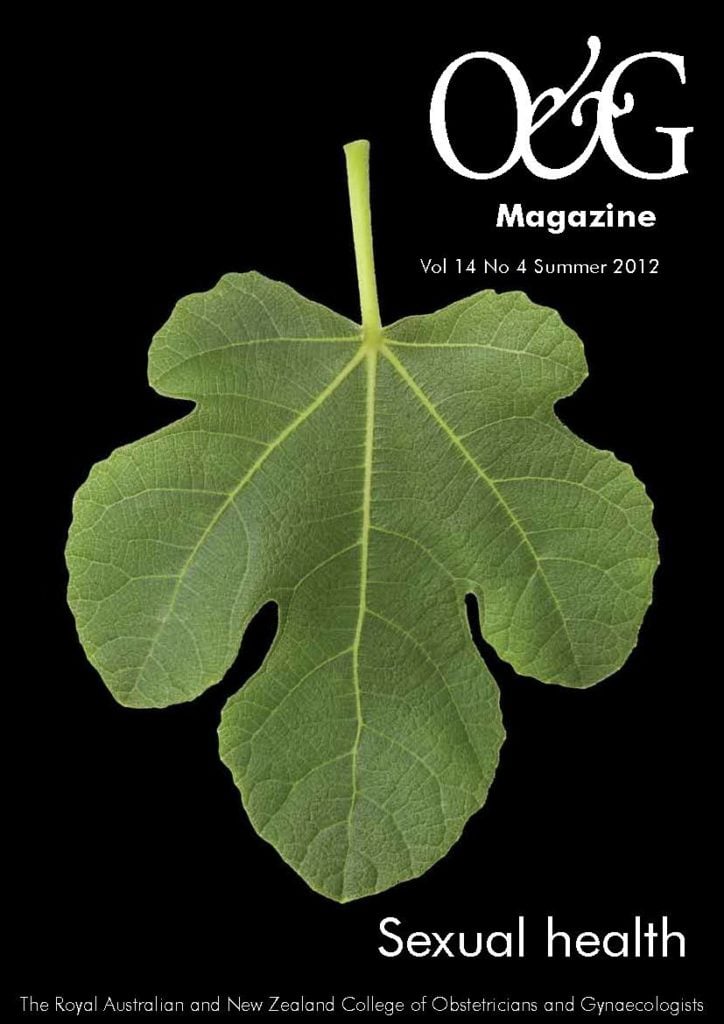‘At seven in the morning I awake all filled with you. Your image, and the intoxicating pleasures of last night, allow my senses no rest. Sweet and incomparable Josephine, how strangely you work upon my heart…one night has taught me how far your portrait falls short of yourself…’
Napoleon Bonaparte, Paris, December 1795.
As the recent exhibition in Melbourne of Napoleonic memorabilia demonstrates, the little Corsican who became Emperor of the French remains one of the most fascinating characters of all time. Since his death, in 1821, there have been more books published about him than days have passed. Yet there are possibly still aspects of the Napoleonic saga that remain unexplored. In particular, could the tiny microbes Chlamydia trachomatis or Neisseria gonorrhoeae have played an as yet unacknowledged role in the events that convulsed Europe in the early years of the nineteenth century?
A portrait by Gros of Napoleon’s first Empress, Josephine, hangs at her house, Malmaison, once a country residence, now surrounded by the dormitory suburbs of Paris. Against a classical background, Madame Bonaparte displays flawless skin and silky hair with spit curls each side of her forehead. Her expression is good humoured, but thoughtful, her mouth firmly closed: like many women of the times, before orthodontics and anaesthetics, she had problems with her teeth, which were decayed or absent, so that when she spoke she covered her mouth prettily with her hands. Her voice was said to be low and musical; despite living nearly all her adult life in France she never lost the Creole accent of her native Martinique.
At the end of his life Bonaparte wrote of her: ‘She was the most alluring, most glamorous creature I have ever known. A woman in the fullest sense of the word – changeable, spirited and with the kindest of hearts.’ Yet 13 years after they were married, he divorced her and married 18-year-old Marie-Louise, daughter of the Emperor of Austria. ‘Divorce,’ he wrote, ‘has become a stern duty for me.’ Admired and loved though Josephine might be, she had failed to provide her husband with an heir.
Surprisingly, though, at the time of the divorce, Josephine and Napoleon had between them several children. Josephine was the mother of a son, Eugene, and a daughter, Hortense, Napoleon’s step-children and always treated with great affection by him. In 1806, Napoleon’s mistress Eleonore Denuelle had given birth to a son and, in 1809, another boy was born, to the Polish patriot Marie Waleska, with whom Napoleon had an affair during his Polish campaign. It was simply that Napoleon and Josephine were unable to conceive a child together. From her story, it seems likely that Josephine’s secondary infertility was due to tubal factors, acquired after the births of the children during her first marriage and during the turbulent years of the French Revolution.
She was born Marie-Josephe-Rose de la Pagerie in 1763, into a family of indolent and impoverished sugar growers and slave owners who valued their connections to the French aristocracy. At the age of 15, after little formal education, she travelled to France for an arranged marriage with 17-year-old Viscount Alexandre de Beauharnais. The union was a disaster from the start; Alexandre had a much older mistress to whom he was devoted, and soon dispatched his young wife to a convent. Nevertheless, she had two children by him in the first three years of the marriage, both normal pregnancies and births. Soon after the second birth, fed up with her husband’s errant ways and clearly growing more savvy with the world, she found herself a lawyer and arranged a separation that gave her an income and a comfortable life, probably with the attention of several lovers.
All this changed with the arrival of the Revolution in 1789. Alexandre was initially a supporter, one of those who met at Versailles in June 1789 and established the first National Assembly. He rejoined the army and took part in campaigns against Austria and Prussia. However, by 1793, he had attracted the displeasure of Robespierre and, in July 1794, he was led to the guillotine. In April that year, Josephine, as his wife, was also imprisoned; imprisonment meant a rather social incarceration with other members of the aristocracy, and it is known that in this time Josephine had a short liaison with General Lazare Hoche.
She was saved from the same fate as Alexandre by the downfall of Robespierre in mid 1794, and emerged to a Paris throwing itself into a frenzied search for pleasure, considered a necessary aftermath to the austerity of the Revolution. Her immediate problem was how to survive herself, and provide for her children, in these new conditions. In 1795, the Directory replaced the Convention (which had replaced the National Assembly); through a friend, Josephine met Paul Barras, the most powerful of the Directors, and soon became his mistress. In late 1795, at a dinner she hosted in Barras’ house, she met Napoleon Bonaparte. She was 32, he 26.
He was determined to marry her; he had wanted to marry for some time, and now believed he had found the right person. She was not immediately in love with him, but the marriage held certain financial advantages for her, and she found him ‘amusing’. Barras supported the proposal, and offered Napoleon, as a wedding present, command of the Army of the Alps, to fight Austria and Piedmont in Italy. A civil ceremony duly took place in March of 1796. Napoleon, with his Corsican origins, would certainly have wanted children as soon as possible, and, no doubt observing the polite and healthy children of her first marriage, was sure that Josephine would soon supply him with several fine sons.
His campaigns in Italy were enormously successful (for the French, at least) and he sent for Josephine to join him there, which she eventually did, though she dallied for a time with a young lieutenant, Hippolyte Charles. However, from this time onwards, as Naploeon rose to political as well as military power, it appears that she became increasingly and genuinely attached to him, and increasingly anxious as she failed to conceive the desired offspring. With current knowledge of pelvic pathology, it seems very plausible that between the birth of Hortense, in 1783, and her marriage to Bonaparte, in 1796, Josephine contracted either chlamydia or gonorrhea, quite possibly subclinically, and developed salpingitis with subsequent infertility.
Gonorrhoea is one of the oldest known human illnesses; there are references to the condition in ancient Chinese writings, the Bible and the works of Galen, although the gonococcus itself was not identified until long after Josephine’s death, by the German dermatologist Neisser, in 1879. Chlamydial sexually transmitted infections (STIs) have probably been around just as long, even though the organism responsible was only fully recognised in 1965. Effective treatments for both conditions were of course completely unknown to physicians in Josephine’s lifetime.
The tone of Josephine’s letters in the middle years of her marriage, and descriptions of the times, suggest anticipating missed periods which in fact arrived, and she soon sought medical help, first from her own doctor, Martinet, and then from Napoleon’s, Joseph Corvisart. It was Corvisart who advised her to visit the spa town of Plombières, which she did first in 1798, and several times later. A visit to Plombières had proved fruitful for her sister-in-law Julie, who had conceived a daughter after six years of infertility. However, no amount of bathing and douching improved Josephine’s prospects of conception.
Meanwhile, Napoleon, following the disastrous Egyptian campaign, in late 1799, took part in the coup in Paris that forced the resignation of the Directory and the appointment of a three-man consulate; Napoleon himself became the most powerful of these Consuls. By his political manoeuvring and military skills he made himself virtual master of France and proceeded to impose a dictatorship that nevertheless consolidated many of the gains of the Revolution. In 1804, after several attempts upon his life, Napoleon was proclaimed hereditary Emperor of the French, and Josephine his Empress, to remove all possibility of changing the regime by assassination. However, the absence of an heir meant that the actual question of succession remained unanswered and Josephine grew more and more desperate in her search for a cure to her problem.
Napoleon had spectacularly defeated the Austrians at Marengo in 1800, which made him enormously popular in France. However, war continued intermittently with the British who formed a new alliance with the Austrians, Russia, Sweden and Naples. Britain won a great victory at sea in 1805, but elsewhere the French armies were successful and an uneasy peace was established with the Austrians. The Russian Tsar, Alexander I, tired of the alliance with the British, met Napoleon at Tilsit on the Russian-Prussian frontier in 1807, and the two men divided Europe between them, Napoleon taking the west and Alexander the east. In the following years though, the relationship soured; Napoleon abandoned his plans to try to marry Alexander’s younger sister and instead, following his divorce from Josephine, married Marie-Louise. A year later a son, known as the King of Rome, was born. Feeling more confident of his relationship with the Austrians and other temporary allies, Napoleon, in the spring of 1812, took the decision to march on Moscow, to sort out Alexander once and for all. With nearly half a million men he set out east. Meeting the Russians at Borodino, the battle (its 200th anniversary being observed this year) was not decisive and both sides suffered huge losses, made even greater by the eventual retreat of the invading armies from Moscow in the winter of 1812. The Austrians and others withdrew their support and the French themselves, for all their courage, had lost their former enthusiasm for their Emperor’s ideas of conquest.

Josephine and Napoleon: grand passion was theirs, but no children. Could an STI have been to blame?
War continued into 1813, and in October the French Grande Armée was defeated at the Battle of Leipzig. The British pressed in from Spain and in Italy the Austrians took the offensive. These allies entered Paris in early 1814, and in April Napoleon abdicated. Banished to Elba, he returned in 1815 for the Hundred Days, in an attempt to overthrow the Bourbon Restoration, a regime unpopular from the beginning with the French, but his defeat at Waterloo led to permanent exile on St Helena.
Marie-Louise declined to join her husband on either Elba or St Helena. Josephine died of a fever, at Malmaison, in May 1814, otherwise she might well have done so.
In brief then can be seen the enormous military achievements and popularity of Napoleon’s earlier years of power, coinciding roughly with the first ten years of his marriage to Josephine and followed by his increasingly ambitious and dictatorial approach after 1805. All of which led to the need for further wars that, from 1810 onwards, worked to lead to his downfall.
Suppose, though, that Josephine’s tubes had been functioning normally at the time of her marriage in 1796. Might things have worked out differently? Suppose that a son had been born in late 1796, another conceived in Italy and born in early 1798. Then perhaps two or three more, daughters and sons, born around the turn of the century. Josephine would still have been in her thirties at this time.
Certainly there would have been no divorce in 1809. Napoleon would have had no need or wish to abandon the mother of his children. Moreover, in the custom of the times, he would have been in a position to arrange marriages between these children – the legitimate heirs of the new French Empire – and the offspring of other European rulers, thereby achieving peace and stability without recourse to the devastation that in fact ensued. Faced with several legitimate direct heirs, Napoleon’s ambitious and squabbling siblings would have had much less claim on him – their attempts at grasping power were also a cause of much unrest in Europe at the time.
Not only might politics have taken a different direction, Napoleon’s own character might have developed differently. From 1805 onwards many observers have described him as increasingly dictatorial, difficult and irrational. Perhaps, pursuing family life at Malmaison, surrounded by his family, tending the roses, playing hide-and-seek, he might have mellowed, become more affable, more relaxed. Less inclined to rush off to military solutions, less ambitious territorially, more inclined to peace. Then there might have been no march on Moscow, no restoration of the vain and inept Bourbons, no Battle of Waterloo and no need for the revolution of 1832.
On St Helena, Napoleon wrote: ‘A son by Josephine would have completed my happiness…it would have secured to me the possession of the throne, the French people would have been much attached to the son of Josephine, and I should not have set my foot upon an abyss covered with a bed of flowers.’ Thus did Napoleon tacitly acknowledge the impact of Josephine’s tubes upon the course of European history.
Further reading
Bruce, Evangeline. Napoleon and Josephine: An Improbable Marriage. New York: Scribner, 1995.
Aronson, T. Napoleon and Josephine. London: John Murray, 1990. Knapton, E. Empress Josephine. Cambridge: Harvard University Press, 1963.
Las Cases, E. Mémorial de Sainte Hélène. Paris: Pleïade, 1948. Stendhal. Mémoires sur Napoléon. Paris: Ancienne Honoré Champion, 1929.






Leave a Reply